
Call it a plug-in hybrid or extended-range electric vehicle, either way, a thumbs up for the 2011 Chevrolet Volt.
The formal launch of the 2011 Chevrolet Volt, earlier this month, was ill-timed to occur the same day a controversy began to brew over the vehicle’s underlying technology. Is Chevy’s long-awaited 4-seater a plug-in hybrid or, as General Motors prefers, an “extended-range electric vehicle”? Then again, does that even matter?
As TheDetroitBureau.com set out to get its first, two-day drive of the Chevy Volt we certainly wanted to get a better understanding of the complex propulsion system GM engineers have come up with, but the real question is whether the vehicle lives up to its lofty expectations – and justifies a rather steep price premium when compared to more conventional, if otherwise similar vehicles, such as Chevy’s own new Cruze.
The simple answer to that first question is that Volt is, technically, a hybrid, but one designed to operate exclusively on battery power the vast majority of the time. And for those green-minded buyers who might have relatively short commutes but occasionally need more range than a pure battery car could provide, the Volt is, in fact, a compelling product.
But, like the offering it’s most often being compared to, Nissan’s pure battery-electric vehicle, the 2011 Leaf, Volt does have some limitations and caveats we’ll try to address.
Chevy first lifted the curtains on the Volt nearly three years ago, at the 2008 North American International Auto Show. The vehicle was the brainchild of Bob Lutz, the recently retired GM Vice Chairman and “car czar” better known for his love of sports cars than for green machines. But Lutz wisely recognized the shifting sands that have made “electrification” the industry buzzword today. He also realized (as did Nissan CEO Carlos Ghosn), that battery power doesn’t have to mean sluggish and boring.
Volt’s hatchback design is anything but. It’s an attractive and stylish vehicle that looks more up-market than the typical compact offering. (In this case with a near-midsize interior.) The cabin is especially well laid out, something GM needed to help justify Volt’s hefty price tag. Perhaps the most controversial element will be the Apple-like high-gloss center stack.
Taking a cue from Toyota, which has had a smash hit with the Prius hybrid in part by giving it a unique shape, GM designers came up with an equally distinctive design that you could spot in a crowded parking lot. They did have to make a few key changes from the original prototype, though. The concept vehicle featured sharply angled edges on its nose and a rounded rear. By reversing that approach, GM designers vastly improved Volt’s aerodynamics.
And cheating the wind is critical for any vehicle running on electric power. As Tom Stephens, the man who replaced Lutz as GM’s product chief, points out, even today’s best lithium-ion batteries can store, by mass, only 1% of the energy contained in a similar mass of gasoline. That’s a problem that has plagued automotive engineers since Henry Ford first turned to old friend Thomas Edison pleading with him to come up with a better battery.
In Volt’s case, there are 400 pounds of liquid-cooled LIon cells stuffed inside a T-shaped battery pack that is, in turn, slotted into the bottom of the Chevy hatchback’s floorpan. It’s a large mass and, when you add the vehicle’s two electric motors, electronic control hardware – and the 1.4-liter Atkinson Cycle inline-four engine that takes over when the batteries ran down – you’ve added 100s of pounds over the weight of a similarly-sized compact, like the Chevy Cruze.
On the positive side, Volt engineers have creatively designed that pack to function as a functional element in the vehicle’s overall design, actually helping to deliver an even more rigid structure. And while there’s a lot of added mass, the batteries are mounted so low that they’ve actually improved Volt’s center of gravity compared with Cruze.
Creativity marked the entire project, from the refinement of Volt’s aerodynamics to the development of its complex drivetrain, which was notably awarded a patent last month. But here’s where the controversy comes in.
As originally conceived, Volt was intended to operate only on electric power at all times. In other words, the four-cylinder gasoline engine was designed to serve solely as a generator, providing electric power to the two Volt traction (or electric) motors when the batteries were discharged. And that’s what virtually all of us have been reporting.
But, it turns out, that’s not accurate.
In refining the drivetrain, GM engineers discovered that at higher speeds and under certain other high-load situations, the electric drivetrain can become rather inefficient. One solution would have been to develop a multi-speed gearbox – a project that Tesla Motors attempted and failed at, delaying the launch of its Roadster by over a year. Instead, the so-called Voltec propulsion system now has four different modes.
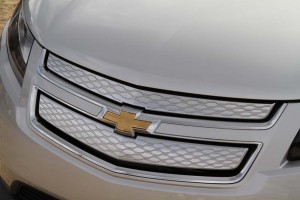
Aerodynamics are critical to improving battery range, here by limiting wind resistance on the nose of the Volt with a mostly sealed grille.
Two are used in pure electric mode. The others kick in when the gasoline motor, or range-extender, fires up. In the third mode, Volt is still being run entirely on electric power. But when you’re pushing up towards highway speeds, for example, and tip in the throttle, or when you’re carrying four passengers up a long, steep hill, Volt will slip into the fourth operating mode.
And here’s the controversy. At that point, the gasoline engine is mechanically linked into the driveline. At the max, it can provide somewhere between 60% and 70% of the torque going to Volt’s driven front wheels.

Fashion Designer Bonnie Siefers test drives the Chevrolet Volt electric vehicle with extended range capabilities during the Chevrolet Volt Unplugged Tour stop at LA Fashion Week.
That doesn’t happen very often, insists Vehicle Line Executive Doug Parks, who says, “We truly believe this is an electric vehicle.” If your battery is kept charged, he points out, that gasoline engine will never even turn on. And, he adds, even when the gas engine does kick in, the electric motors are still doing most or all of the work most of the time.
The approach is likely to, er, generate controversy for some time, which is why Pamela Fletcher, the chief engineer of the Voltec drive system chimes in that, “My take is you should call (Volt) whatever best describes it for you.”
So, we’ll walk the line and say that the 2011 Chevrolet Volt is an extended-range electric vehicle that does, under some circumstances operate as a hybrid. And that lets us get down to what matters: how it performs on the road.
One nice touch, we discovered as we hit the Power button, is that Volt audibly alerts you whenever it’s turned on or off, a function most hybrids notably and annoyingly omit.
With a fully-charged battery and a 9-gallon tankful of gasoline, we headed out from our pickup point at Detroit’s Metro Airport. Sharing duties with TheDetroitBureau.com’s Joe Szczesny — who will weigh in with his own review next week – we headed north to Rochester, Michigan, about 46 miles away and a test of how much we could squeeze out of the 2011 Chevrolet Volt’s 16 kilowatt-hours of batteries.
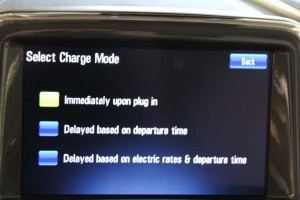
Volt can be pre-programmed for delayed charging to take advantage where reduced-rate overnight power is offered.
Initially, Chevy promised 40 miles of range, but like every manufacturer entering the battery car market GM quickly realized range depends on a variety of circumstances, including road conditions, weather, and whether a driver has a lead or marshmallow foot.
For our first run, we acted as if there were an egg on top of the gas pedal, working to squeeze ever inch of range we could out of the battery. And despite some heavy traffic and plenty of stop-and-go situations, we “transitioned” into gasoline power just a couple tenths of a mile before reaching our destination.
Notably, we wouldn’t have even noticed that transition if the delay on the LCD gauge cluster didn’t switch from a battery to a gas tank icon.
Like all battery vehicles, the lack of engine noise is uncanny when Volt is in electric mode. If anything, Chevy engineers had to work hard to mask wind, tire, even windshield wiper sounds – the so-called “stumps-in-the-swamp” syndrome where you suddenly hear things normally covered up by the roar of an internal combustion engine.
All their efforts have also paid off when the little I4 kicks in. Even then Volt is not only as quiet as anything in its class but comes close to some of the best luxury sedans.
To GM’s credit, we had plenty of additional driving time under more varied circumstances and the opportunity to not only again check range but see how Volt did in extended-range mode on a variety of different roads.
Curiously, the second day saw us achieve about 45 miles range once again, even though we were no longer babying the car and even used heat for a few minutes. Indeed, other than a heavy-footed driver, the biggest way to draw down range is turn on electric heat and defrost, which quickly drain the pack. Officially, GM now is projecting that most drivers will get somewhere between 25 and 50 miles.
Once again, when we transitioned, the switch was almost transparent. We could barely hear it or feel it. Something else notably absent was the lack of gear shifts, something to appreciate about an electric vehicle (or, if you insist, this particular hybrid).
Under aggressive starts, Volt proved pleasantly responsive, launching from 0 to 60 in barely 9 seconds. (Electric motors, it should be noted, develop maximum torque the moment they start to spin, unlike an IC engine, which has to rev up.) And Chevrolet Volt’s low center of gravity and stiff platform became quickly apparent as we wandered through the hilly countryside of Oakland County, an hour north of Detroit.
The hatchback handled surprisingly well, better, in fact, than what we’ve seen the Cruze deliver on sharp curves, though you do sense the extra weight.
The 2011 Volt’s dual-mode brakes, meanwhile, were equally transparent, unlike some of the hybrids we have driven in recent months. Any vehicle using electric propulsion will first engage a regenerative braking mode, which on Volt uses the front wheels as generators, recapturing energy normally lost through friction, and sending it back to the battery. If you brake more aggressively, conventional friction brakes kick in. That transition is also seamless.

In years past, GM would've set up a separate assembly line for Volt. Instead, it is rolling down the same line as the Cadillac DTS and Buick LaCrosse.
As we headed back to our rendezvous point, in Rochester, we worked out that for the entire 157-mile trip – during which we were able to partly recharge the batteries during a long lunch – the vehicle got 71.7 miles on battery power, 85.5 on gas. It used 2.15 gallons of gasoline for a combined equivalent of 72.9 mpg.
Definitely impressive. On the other hand, Volt yielded a less spectacular average of about 41 mpg in extended-range mode — in other words, purely on gas power.
And that underscores the challenge green-minded motorists will have as a new generation of plug-in hybrids, extended-range electrics and pure battery-electric vehicles come to market. Picking the right vehicle will now depend heavily upon knowing precisely how and where you drive.
For those with relatively short daily runs, a pure BEV like the 2011 Nissan Leaf could work perfectly, especially when you consider its relatively modest $25,000 price tag – after the $7,500 federal tax credit. But if you have an occasional run that will clock more than 100 miles you’ll be in trouble unless you have access to another vehicle.
Volt offers even more limited range – though federal data show more than 70% of Americans commute less than 40 miles a day. Its advantage is that I4 gas engine that otherwise serves as a boat anchor when Volt is operating on battery. Need to visit family in Chicago, a 300-mile drive from Detroit? No problem.
No, Volt is not the most fuel-efficient offering in gas mode. It is, in the end, a vehicle about compromises. But that’s what we have to come up with whenever we purchase a vehicle, find the model whose compromises best fit our lifestyle. And that should win the 2011 Chevrolet Volt a number of fans.
The downside is a price tag of $41,000. After the $7,500 federal credit that still works out to nearly $9,000 more than the Leaf. So, in the end, it may come down to how much you’re willing to pay to reduce your “range anxiety.”
Initial reports suggest both vehicles are finding plenty of potential buyers. Leaf has cut off the initial order process while GM is looking for ways to boost production of the 2011 Chevrolet Volt. The reality is that each model will likely find a niche in a market looking for green and efficient alternatives to gasoline.


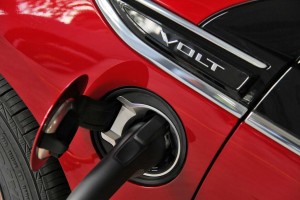



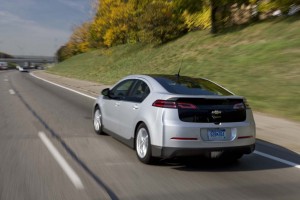
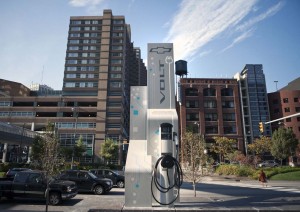

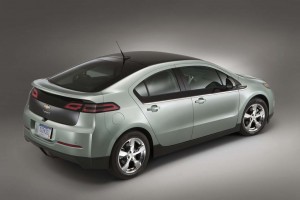
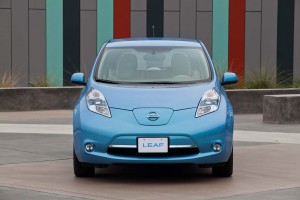
Are you sure the Volt’s 1.4 engine uses the Atkinson Cycle? Many have believed for some time that the engine uses the Otto cycle. Thanks for your comments.
My understanding is that it is, indeed, the Atkinson Cycle. But let me go back to the folks from the Volt program and ask them to confirm.
Paul A. Eisenstein
Publisher, TheDetroitBureau.com